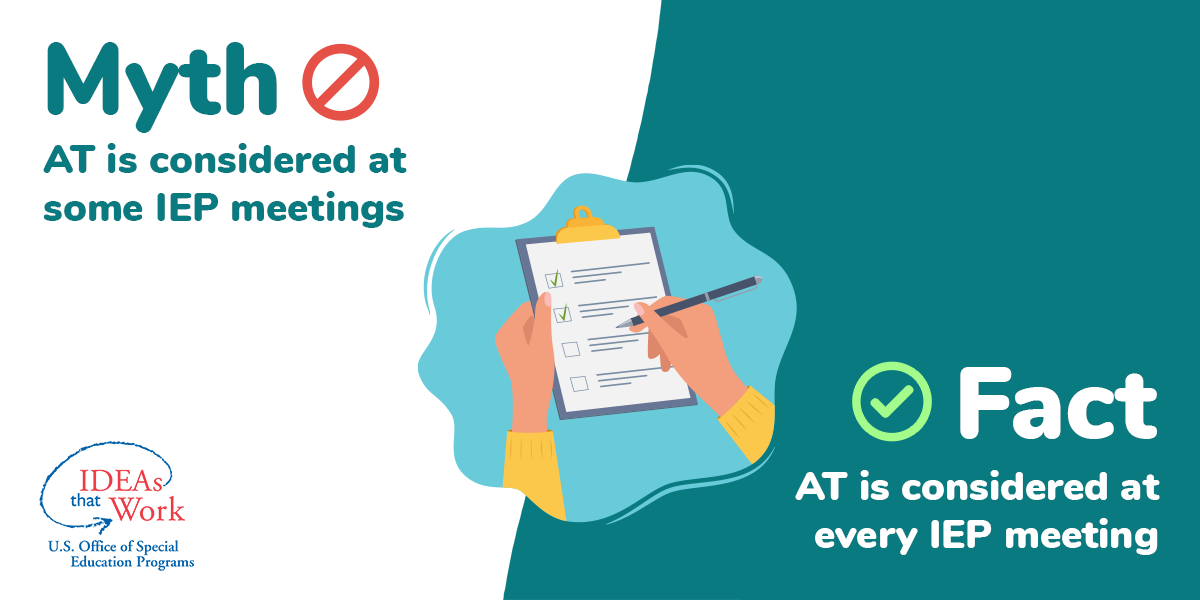Section 2: AT Consideration in the IEP
Annually, the Individualized Education Program (IEP) team is required to “consider” the assistive technology (AT) needs of every student receiving special education services (IDEA, 2004). At this time, the accessible format of their curricular materials (i.e., the accessible educational materials or AEM) should also be considered too. When addressing “AT consideration” within the IEP process, it is important to realize that “consideration” is by nature a brief process that must be conducted during the development of every student’s annual IEP. At least one person on the IEP team should have some knowledge about AT. Consideration of AT and/or AEM must be integrated into the IEP process, as opposed to being an afterthought or simply a “special factor.” Consideration of AT and/or AEM is intended to be a collaborative process.
Ohio’s AT Decision-Making Tool can help guide the team through an appropriate process of first considering universal tools and then AT and accessible educational materials (AEM) as needed to improve a student’s ability to access and make progress in grade level standards. In-depth information about the AT consideration process is outlined in the Assistive Technology Internet Modules (ATIM) AT Consideration in the IEP Process.

AEM Tie-In:
Though it is not specified as a requirement under IDEA, the IEP Team is strongly encouraged to consider whether a child needs accessible formats and which formats they need each time they develop, review, or revise an IEP.
In addition to the consideration during the IEP process, AT should be considered:
- During the Evaluation Team Report (ETR) process
- As a support needed for local and state testing as permitted and used regularly within the classroom
- Anytime the student encounters a barrier to access or participation
AT may be considered:
- Within the MTSS framework, as a part of accessing Tier 1 instruction and/or assessment for students with identified disabilities as per their IEP
- As a part of the MTSS framework, integrated into Tier 2 and 3 instruction/interventions for students who have specific tools/supports outlined in sections 7 or 12 of their IEPs
- As part of identification of supports for students with disabilities who are provided with a 504 plan
Consideration of AEM:
Following the identification of AT or appropriate universal tools/technologies, if the task requires reading or access to text-based materials, consider whether the student requires accessible formats such as audio, braille, large print, tactile graphics, and digital text conforming with accessibility standards to access print-based due to one of the following. Please note that the student may need multiple accessible formats, so additional AT may be needed. The student (eligible person) is an individual who regardless of any other disability:
- is blind (also see braille provision in IDEA).
- has a visual impairment, or perceptual or reading disability that cannot be improved to the same degree as a student without an impairment or disability.
- is otherwise unable, through a physical disability, to hold or manipulate a book or to focus or move the eyes to the extent acceptable for reading.
